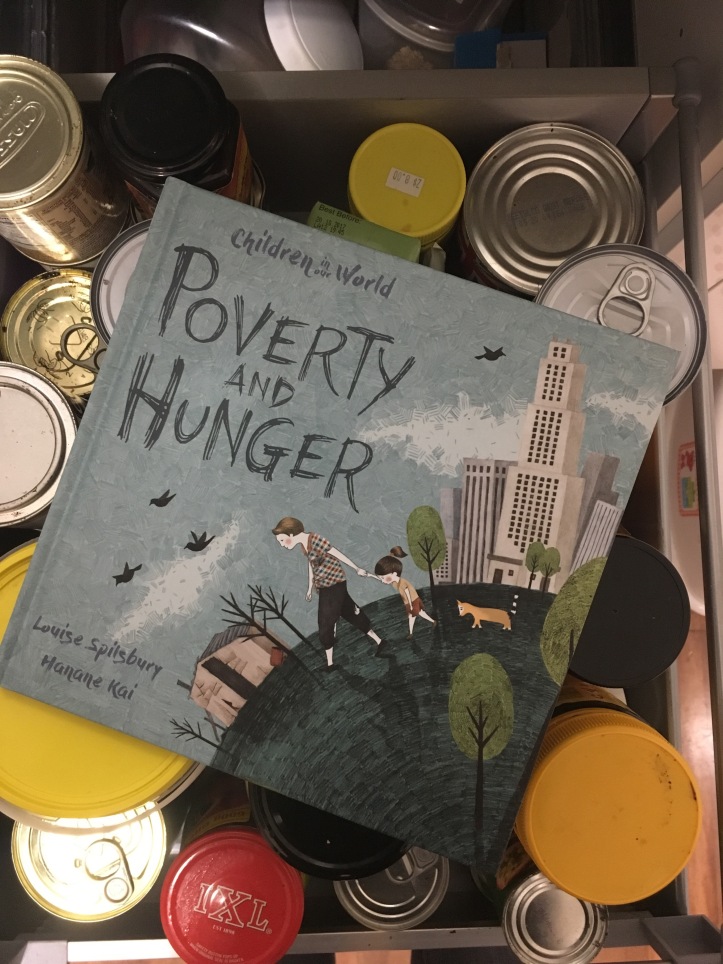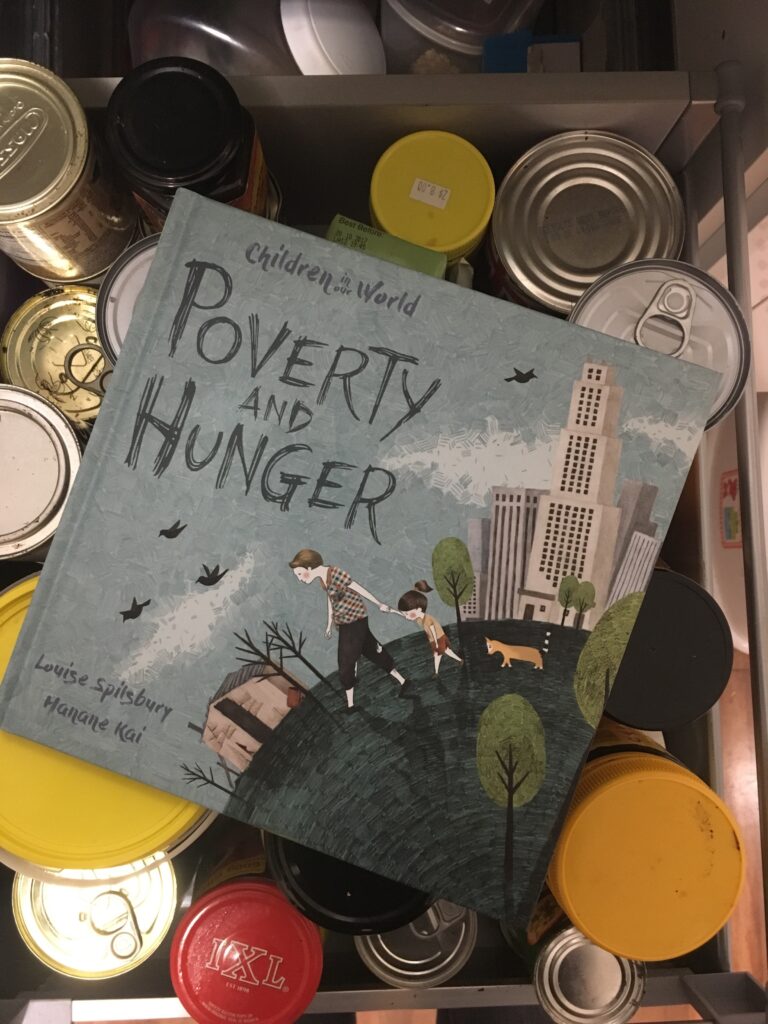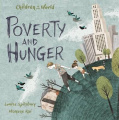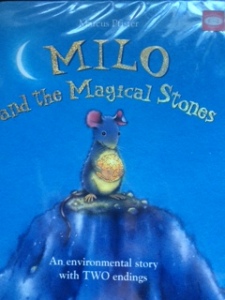How do you talk to your children about poverty? Have you ever wandered through the city and seen a homeless person sleeping on the street? What have you said to your child? Or more importantly – what have they asked you?

Poverty is a huge issue in our society and one which often gets unnoticed as a lot of the media coverage it driven by consumerism and money. We see so many images of people who have so much, we see advertisements telling us we need to have things to make us happy but how often do we see the people who have lost their homes, loved ones and money? Not so much.
To tell you the truth I was a little bit hesitant about reading Children in our world: Poverty and Hunger by Louise Spilsbury and Hanane Kai to my six year old. But she wanted to read it. She told me she wanted to know more about poor people, why they are poor and how we can help them.
Perhaps the numerous stories we have read and conversations we have had are paying off.
Children in our world: Poverty and Hunger by Louise Spilsbury and Hanane Kai is wordy but is written in language that children can identify with. I didn’t feel that I needed to paraphrase any of the story or leave anything too confronting out. I didn’t even need to come up with a reflection of what we can do as the final pages give ideas to the reader.
This book gently looks at poverty and hunger – and leaves the reader empowered to do something, not fearful of the world we live in.
We need to read these books to our children as this is the world we live in but we need to do it in a way – as done in this book that educates them so they know why these things can happen. Different reasons are given for poverty and hunger and also different ways volunteers and governments try to help out to alleviate these issues.
Children in our world: Poverty and Hunger by Louise Spilsbury and Hanane Kai is a must have for anyone wanting to explore these issues with their children and students.
BUY NOW



